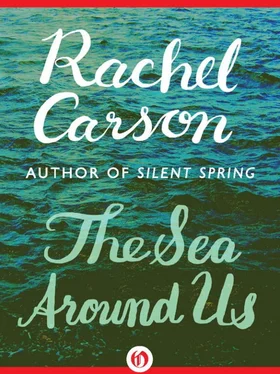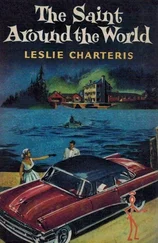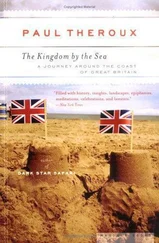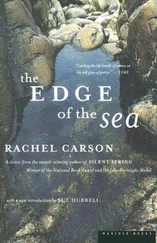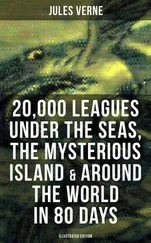Perhaps some word-of-mouth tales of the mysterious northern world, filtering down by way of the early trade routes for amber and tin, colored the conceptions of the early legends, so that the boundary of the land world came to be pictured as a place of fog and storms and darkness. Homer’s Odyssey described the Cimmerians as dwelling in a distant realm of mist and darkness on the shores of Oceanus, and they told of the shepherds who lived in the land of the long day, where the paths of day and night were close. And again perhaps the early poets and historians derived some of their ideas of the ocean from the Phoenicians, whose craft roamed the shores of Europe, Asia, and Africa in search of gold, silver, gems, spices, and wood for their commerce with kings and emperors. It may well be that these sailor-merchants were the first ever to cross an ocean, but history does not record the fact. For at least 2000 years before Christ—probably longer—the flourishing trade of the Phoenicians was plied along the shores of the Red Sea to Syria, to Somaliland, to Arabia, even to India and perhaps to China. Herodotus wrote that they circumnavigated Africa from east to west about 600 B.C., reaching Egypt via the Straits of the Pillars and the Mediterranean. But the Phoenicians themselves said and wrote little or nothing of their voyagings, keeping their trade routes and the sources of their precious cargoes secret. So there are only the vaguest rumors, sketchily supported by archaeological findings, that the Phoenicians may have launched out into the open Pacific.
Nor are there anything but rumors and highly plausible suppositions that the Phoenicians, on their coastwise journeys along western Europe, may have sailed as far north as the Scandinavian peninsula and the Baltic, source of the precious amber. There are no definite traces of any such visits by them, and of course the Phoenicians have left no written record of any. Of one of their European voyages, however, there is a secondhand account. This was the expedition under Himlico of Carthage, which sailed northward along the European coast about the year 500 B.C. Himlico apparently wrote an account of this voyage, although his manuscript was not preserved. But his descriptions are quoted by the Roman Avienus, writing nearly a thousand years later. According to Avienus, Himlico painted a discouraging picture of the coastwise seas of Europe:
These seas can scarcely be sailed through in four months… no breeze drives the ship forward, so dead is the sluggish wind of this idle sea… There is much seaweed among the waves… the surface of the earth is barely covered by a little water… The monsters of the sea move continually hither and thither, and the wild beasts swim among the sluggish and slowly creeping ships.
Perhaps the ‘wild beasts’ are the whales of the Bay of Biscay, later to become a famous whaling ground; the shallow water areas that so impressed Himlico may have been the flats alternately exposed and covered by the ebb and flow of the great tides of the French coast—a strange phenomenon to one from the almost tide-less Mediterranean. But Himlico also had ideas of the open ocean to the west, if the account of Avienus is to be trusted: ‘Farther to the west from these Pillars there is boundless sea… None has sailed ships over these waters, because propelling winds are lacking on these deeps… likewise because darkness screens the light of day with a sort of clothing, and because a fog always conceals the sea.’ Whether these descriptive details are touches of Phoenician canniness or merely the old ideas reasserting themselves it is hard to say, but much the same conceptions appear again and again in later accounts, echoing down the centuries to the very threshold of modern times.
So far as historical records are concerned, the first great voyage of marine exploration was by Pytheas of Massilia about 330 B.C. Unfortunately his writings, including one called On the Ocean, are lost and their substance is preserved for us only in fragmentary quotations passed on by later writers. We know very little of the controlling circumstances of the northward voyage of this astronomer and geographer, but probably Pytheas wished to see how far the oecumene or land world extended, to learn the position of the Arctic Circle, and to see the land of midnight sun. Some of these things he may have heard of through the merchants who brought down tin and amber from the Baltic lands by the overland trade routes.
Since Pytheas was the first to use astronomical measurements to determine the geographic location of a place and in other ways had proved his competence as an astronomer, he brought more than ordinary skill to an exploratory voyage. He seems to have sailed around Great Britain, to have reached the Shetland Islands, and then to have launched out into the open ocean to the north, coming at last to ‘Thule,’ the land of midnight sun. In this country, he is quoted as reporting, ‘the nights were very short, in some places two, in others three hours long, so that the sun rose again a short time after it had set.’ The country was inhabited by ‘barbarians’ who showed Pytheas ‘the place where the sun goes to rest.’ The location of ‘Thule’ is a point much disputed by later authorities, some believing it to have been Iceland, while others believe that Pytheas crossed the North Sea to Norway. Pytheas is also said to have described a ‘congealed sea’ lying north of Thule, which accords better with Iceland.
But the Dark Ages were settling down over the civilized world, and little of the knowledge of distant places acquired by Pytheas on his voyagings seems to have impressed the learned men who followed him. The geographer Posidonius wrote of the ocean that ‘stretched to infinity’ and from Rhodes he undertook a journey all the way to Gadir (Cadiz) to see the ocean, measure its tides, and determine the truth of the belief that the sun dropped with the hissing of a red-hot body into the great western sea.
Not for about 1200 years after Pytheas do we have another clear account of marine exploration—this time by the Norwegian Ottar. Ottar described his voyagings in northern seas to King Alfred, who recorded them in a straightforward narrative of geographic exploration strikingly free from sea monsters and other imaginary terrors. Ottar, on the basis of this account, was the first known explorer to round the North Cape, to enter the Polar or Barents Sea, and later to enter the White Sea. He found the coasts of these seas inhabited by people of whom he seems to have heard previously. According to the narrative, he went there ‘chiefly to explore the country, and for the sake of the walrus, for they have much valuable bone in their tusks.’ This voyage was probably made between A.D. 870 and 890.
Meanwhile the age of the Vikings had dawned. The beginning of their more important expeditions is usually considered to be the end of the eighth century. But long before that time they had visited other countries of northern Europe. ‘As early as the third century and until the close of the fifth century,’ wrote Fridtjof Nansen, ‘the roving Eruli sailed from Scandinavia, sometimes in company with Saxon pirates, over the seas of western Europe, ravaging the coasts of Gaul and Spain, and indeed penetrating in 455 into the Mediterranean as far as Lucca in Italy.’ As early as the sixth century the Vikings must have crossed the North Sea to the land of the Franks, and probably to southern Britain. They may have established themselves in Shetland by the beginning of the seventh century, and plundered the Hebrides and northwest Ireland about the same time. Later they sailed to the Faroes and to Iceland; in the last quarter of the tenth century they established two colonies in Greenland, and shortly thereafter they steered across the intervening Atlantic waters to North America. Of the place of these voyages in history Nansen writes:
Читать дальше
